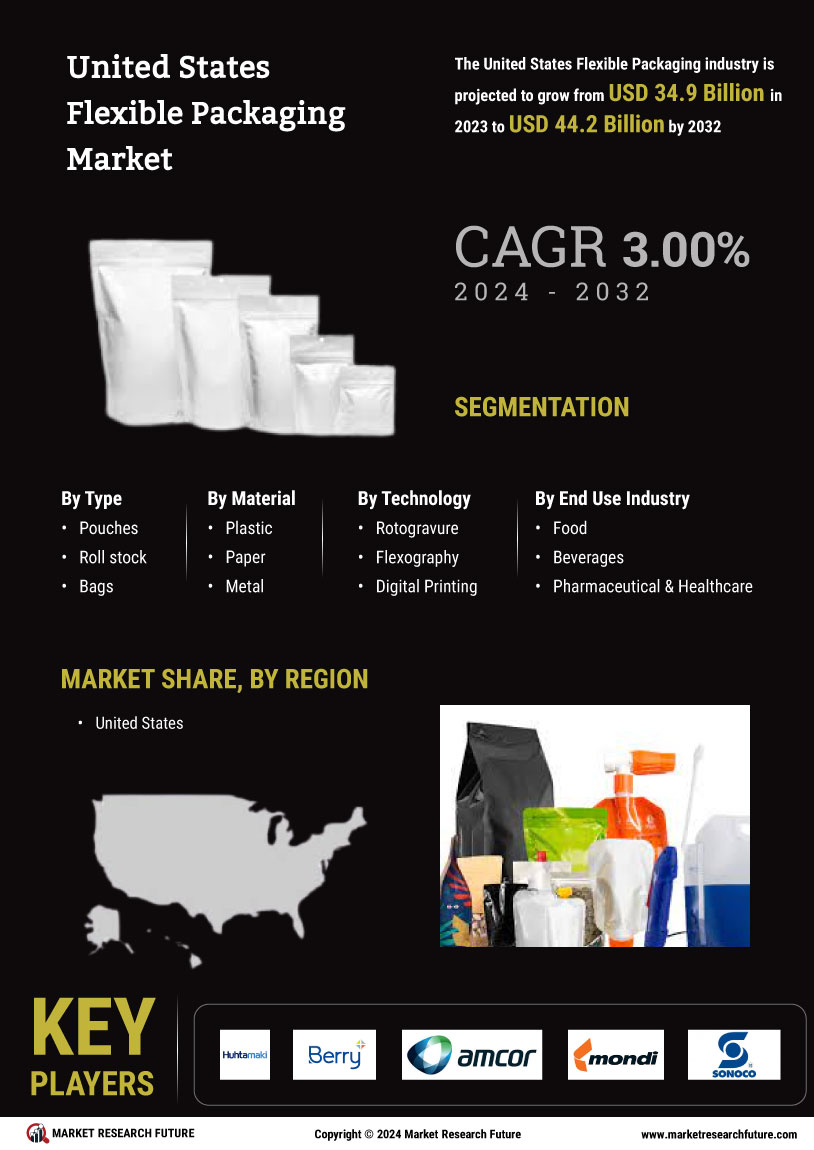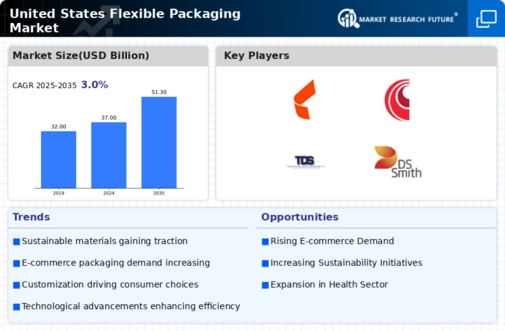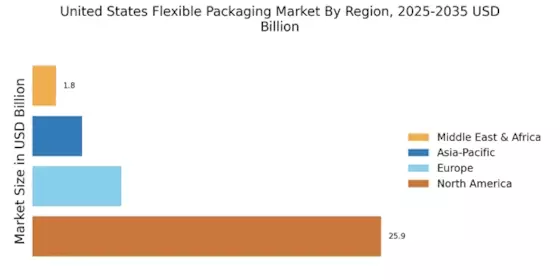Increased Focus on Food Safety
Food safety remains a critical concern for consumers and manufacturers alike, significantly impacting the flexible packaging market. With rising awareness regarding foodborne illnesses, there is a growing demand for packaging solutions that ensure product integrity and safety. Flexible packaging materials, such as barrier films and vacuum-sealed pouches, are increasingly utilized to protect food from contamination and spoilage. Recent statistics indicate that the food safety packaging segment is expected to witness a growth rate of around 6% annually. This trend compels companies within the flexible packaging market to invest in advanced materials and technologies that enhance food safety, thereby fostering consumer trust and brand loyalty.
Growth of the Snack Food Sector
The snack food sector is experiencing robust growth, which is positively influencing the flexible packaging market. As consumers increasingly seek convenient and portable snack options, manufacturers are turning to flexible packaging solutions that cater to these preferences. Flexible pouches and bags are particularly favored for their ability to maintain freshness and provide portion control. Recent market analysis indicates that the snack food segment is projected to expand at a CAGR of approximately 4.8% over the next few years. This growth presents opportunities for companies in the flexible packaging market to innovate and develop tailored solutions that meet the evolving demands of snack food consumers.
Regulatory Compliance and Standards
Regulatory compliance is a significant driver in the flexible packaging market, as manufacturers must adhere to stringent safety and quality standards. In the US, agencies such as the FDA impose regulations that govern packaging materials, particularly in food and pharmaceutical sectors. Compliance with these regulations is essential for market entry and consumer safety. As a result, companies are increasingly investing in research and development to ensure their products meet these standards. This focus on compliance not only enhances product safety but also fosters consumer confidence in the flexible packaging market, potentially leading to increased market share for compliant manufacturers.
Rising Demand for Convenience Packaging
The flexible packaging market is experiencing a notable surge in demand for convenience-oriented solutions. Consumers increasingly favor products that offer ease of use, portability, and extended shelf life. This trend is particularly evident in sectors such as food and beverage, where flexible packaging solutions, including pouches and bags, are preferred for their lightweight and resealable features. According to recent data, the convenience packaging segment is projected to grow at a CAGR of approximately 5.5% through 2026. This growth is likely to be driven by changing consumer lifestyles and preferences, which emphasize on-the-go consumption. As a result, manufacturers in the flexible packaging market are innovating to meet these demands, thereby enhancing their product offerings and market presence.
Shift Towards Lightweight Packaging Solutions
This market is witnessing a pronounced shift towards lightweight packaging solutions., driven by both environmental and economic considerations. Lightweight packaging not only reduces material usage but also lowers transportation costs, which is increasingly appealing to manufacturers. Data suggests that lightweight packaging can reduce shipping costs by up to 20%, making it a financially attractive option. Additionally, as sustainability becomes a priority, companies are exploring innovative materials that maintain product quality while minimizing environmental impact. This trend is likely to encourage further advancements in the flexible packaging market, as businesses seek to balance cost efficiency with eco-friendly practices.


















Leave a Comment